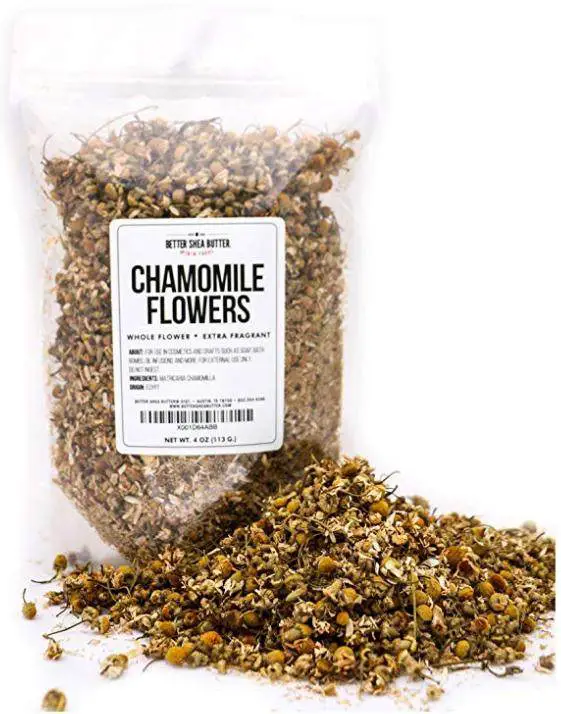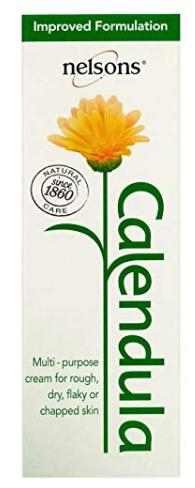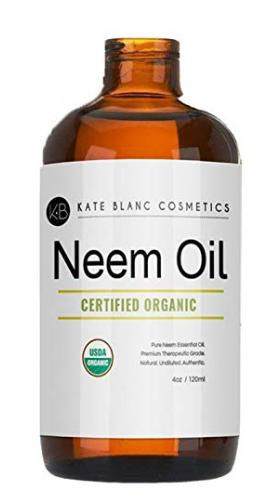Rash on the neck is common in both men and women, old or babies. It can be very itchy and irritating, making it very annoying to have. The rash can appear on the back of the neck or side of the neck. It could also be recurring, making the skin around the neck appear red or dark. Here are some of the common causes, treatments, and how to get rid of the rash.
The common causes of this condition include mild allergic reactions, inflammatory disorders, or dermatitis. In most cases, this rash is not permanent harm and can, therefore, clear without any form of treatment. However, some rashes indicate a serious underlying issue and therefore require medical checkup.
What causes a rash on neck

Rash on the neck is an inflammatory reaction of the skin that covers the neck, which includes the front of the neck, between head and chest, and nape of the neck just below the hairline in the back. This is a very common condition and greatly varies in appearance, location, and severity, depending on the underlying cause. This rash can appear red, white, purple, or silver. It can also be in the form of dots or spots in a large continuous area.
There are several reasons you may have a rash on the neck. It could be an allergic reaction to food or sun exposure. You can, however, suffer a persistent rash that requires medical attention. This is a sign that your condition could be caused by an underlying medical condition. The following are some of the possible causes for your condition;
1. Fungal rash
Fungi cause several skin conditions. The most common of these include dermatophytes (tinea) and yeasts. Tinea versicolor is a fungal infection of the skin caused by a type of yeast that naturally lives on your skin. This yeast could grow out of control and end up causing a skin disease, which presents as a rash. The yeast on the skin exists both in an inactive (spores) and active filamentous form.
The most common risk factors for such an infection include;
- Having a weak immune system
- Hot atmospheric conditions
- Poor nutrition
- Genetics
- An oily skin
- Excessive perspiration
- Hormonal changes
This condition can affect anyone but is most common in teens and young adults. It should not worry you much since the yeast naturally grows on your skin; it is not contagious.
2. HIV neck rash
An HIV rash usually occurs within the first two months after getting infected with the virus. This is a primary stage of infection and could last until the body creates antibodies that fight HIV. At this stage, the virus duplicates at a rapid rate. The rash can also be caused by the side effects of the medications for treating HIV, and it occurs in several places, including; neck, chest, at the back, or feet.
3. Lupus
Lupus is a lifelong immune system disorder whereby the immune cells attack the body’s healthy tissues, causing inflammation and damage to the tissues. The symptoms of this condition vary from person to person. In some people, the symptoms are mild, whereas others suffer severe symptoms. There are some common symptoms of lupus, which include;
- Rashes- lupus can cause a butterfly-shaped rash across the cheeks and bridge of the nose. These rashes can be itchy or painful and could get worse, especially if they get exposed to sunlight. You may also have red spots or a scaly, purple rash on various parts of the body, including the face, arms, and neck. This condition may get better in a few days or weeks but can last longer or even become permanent.
- Joint pain-you may experience joint pains if you have this condition and is usually worse in the morning. This pain tends to occur on both sides of the body but is most commonly felt on wrists, fingers, and knees. The affected joints may feel warm to touch and look inflamed. This should not worry you much, though, since lupus doesn’t cause permanent joint damage.
- Fatigue – if you have lupus, you are most likely to suffer from some degree of fatigue. It can also interfere with exercise or daily activity if it gets severe. This condition can be very distressing and disruptive since it harms your work and social life.
4. Dry skin
Rash on the neck can be caused by dry skin, a common symptom of atopic eczema. Eczema is a general term for describing different conditions in which the skin may become inflamed, scaly, or itchy. This condition affects both adults and children, but it is not contagious. It mostly affects people with a family history of allergies, but some factors may trigger a flare-up, these include;
- Skin irritants- such as soaps and detergents, or skincare products
- Stress
- Allergens
- Environment or climate
In children, this condition is often seen on the elbows, knees, face, neck, and scalp. In adults, it normally affects the hands and elbows. The most common symptoms of this condition include;
- Small fluid-filled bumps that ooze when scratched
- Dry, scaly or crusted skin that may thicken on scratching
- Itchiness
- Redness
5. Diabetes
Diabetes may cause a skin rash, especially if it develops to type 2 diabetes. This condition affects the way your body absorbs glucose. This could happen, especially when the body rejects insulin or when there is not enough insulin to maintain a normal blood sugar level.
6. Sun rash
Sun rays lead to a condition called heat rash, a type of rash that occurs from excessive perspiration during hot weather. Normally, perspiration evaporates on its own, but in extremely harsh conditions, it can trap under the skin and cause sweat glands to clog.
This clogging is accompanied by itchy prickly skin, red bumps, inflammation, and reduced sweating on the affected area. This condition can affect anyone who exposes themselves to hot environments.
The common area affected by heat rash includes the back of the neck and upper chest, elbows, and under the breasts. You can avoid this condition by wearing sun-proof on the areas exposed to the sun or putting on light clothing that allows air circulation in the body.
This clogging is accompanied by itchy prickly skin, red bumps, inflammation, and reduced sweating on the affected area. This condition can affect anyone who exposes themselves to hot environments.
The common areas affected by heat rash include the back of the neck and upper chest, elbows, and under the breasts. You can avoid this condition by wearing sun-proof on the areas exposed to the sun or putting on light clothing that allows air circulation in the body.
You can avoid this condition by wearing sun-proof on the areas exposed to the sun or putting on light clothing that allows air circulation in the body.
7. Neck rash after shaving
Neck rash can be as a result of razor burn. This causes an irritating rash that is slightly itchy and red on your face or neck. If it develops to severe cases, it leads to razor bumps as a result of created ingrown hairs. To avoid this, you should take a hot shower before shaving.
Itchy rash on neck
There are several reasons why you may suffer an itchy rash on the neck. It could be an allergic reaction or a serious underlying health issue. You will only find out if your doctor runs some tests to find out what it is. You may also learn about our condition by analyzing the common symptoms experienced. The following are the common reasons that could be causing this condition, along with the symptoms that accompany them;
Eczema– this is a skin condition characterized by patches of skin that are inflamed, itchy, cracked, and rough. This condition is very common in the American population, and it affects a very large population. The common risk factors for this condition include;
- Environmental factors like smoke or pollen
- Nutrient deficiencies
- Bacterial infections
- Genetic factors
Rash on the neck not itchy
Your skin is prone to rashes, blemishes, and bumps that are not itchy. These outbreaks are harmless and will clear up on their own. The most common causes of such a rash on your neck could be;
- Acne- this is a common rash in teenagers, and it is caused by blocking the hair follicle from an increase in the production of sebaceous matter in the skin. This causes a localized inflammation of the skin, accompanied by red papules or fluid-filled pimples, called pustules. This condition is very common and ranges from mild to severe.
- Irritant contact dermatitis– some chemicals like detergents or other cleaning and industrial products may cause a dry, non-itchy eruption. These chemicals can affect everyone but can affect some people more than others. The common areas which are vulnerable to this condition include eyelids or neck. The time taken for this condition to clear depends on the type of allergen.
- Heat rash– this is a common condition in hot weather, and it normally clears after the temperature cools. In most cases, the rash is not itchy unless there are allergens in that environment. This rash appears as small, clear-white fluid-filled bumps on the skin surface. It is common in babies, but it also affects adults, especially those involved in excessive physical activity.
- Drug rash- you may suffer a rash on the neck due to the side effects of some medications. This could occur after a few days after you take your medications. This condition is characterized by a series of red spots that spread over a large area of the body. This rash could clear up after a few days, but in the case of a severe outbreak, you will require further medication. You should also avoid drugs, causing the rash.
Rash on back of the neck
Rash on the neck is an inflammatory reaction of the skin covering the neck, which mostly affects the front of the neck, between the head and at the back of the hairline in the back.
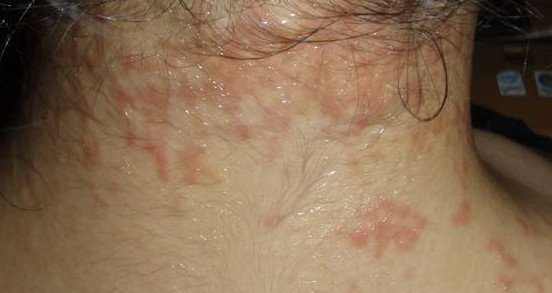
Baby neck rash
A rash developing on babies is a perfectly normal condition, as their sensitive skin tries to adapt to a new environment. Such rashes are not harmful and normally clear on their own. Some other rashes may not clear right away and may need a medical checkup to determine their cause. Such conditions for such a rash include;
- Eczema
- Sweat rash
Bumpy rash on neck, back and around
Bumpy rash on your neck and back is a sign of lipomas. Lipomas are deposits of fat under the skin that normally show up in the neck, back, or shoulders.
These bumps are harmless and normally feel soft and are not painful on touch. This condition can affect anyone, but it is common in adults. The other parts affected by this condition include the thighs, abdomen, and arms.
Some other common symptoms of this condition include;
- Slow growth
- They are colorless
- They are pale and are under the skin
- Can be moved easily if prodded with a finger
- They are soft to touch
Though not harmful, they may make you uncomfortable, and there are several forms of treatments offered for this condition, which include; surgery, steroid injections, or liposuction.
Red neck rash
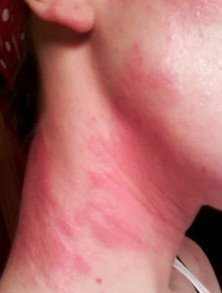
Although rashes can develop anywhere on your body, red rash on the neck is a common condition. In most cases, this rash is itchy, and it gets worse if it gets in contact with sweat. This is a common sign of dermatitis, and rashes from this condition can also occur in other body parts like cheeks and buttocks. Dermatitis is caused by allergens such as chemicals, metals, medicines, or plants. In babies, this condition can be a result of allergies from diapers.
Red rash on the neck can also be caused by rosacea. In this condition, the rashes may spread from other parts of the face, onto the neck and ears. This condition causes a non-itchy rash, but it may cause a burning sensation.
Recurring neck rash
It is normal for rashes to recur, especially if not completely treated or if they are caused by allergens, which you constantly get in contact with. For instance;
Acne a skin condition that occurs when the pores of the skin get clogged with excessive oil. It normally erupts when sebum is unable to pass from the skin and where the sebaceous gland located in the skin layer and skin pores become clogged. This condition can recur even after treatment, especially if you have low self-esteem or if you suffer some injuries that may block the sebaceous glands.
Treatment for neck rash
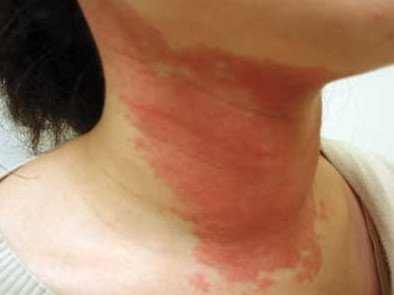
When treating a neck rash, the options will vary depending on what the underlying cause is. Treatment also varies from one person to the other depending on general health and the severity of the symptoms. Here are some of the common treatment your dermatologist might prescribe for you:
1. Topical ointments
You can apply hydrocortisone cream to your neck. This helps soothe the affected skin as well as relieve itchiness. This product is available over the counter in most drug stores. We highly recommend the Hydrocortisone Anti-Itch Cream from Vanicream (Check price on Amazon)
2. Antibacterial cleanser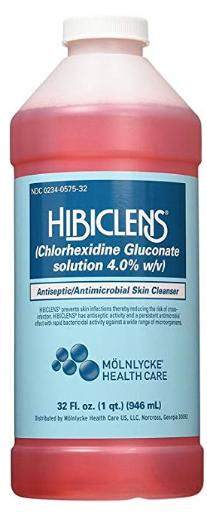
Use antibacterial cleanser to cleanse your neck. Since your neck rash could be caused by irritants or bacteria that clog your pores, this product helps wipe any potential traces of such irritants. A great choice would be Hibiclens antimicrobial skin liquid soap
3. Avoid allergens
Your neck rash could be caused by allergens that irritate your skin, and it is best if you avoid contact with such surfaces to avoid the recurring of this condition.
How to get rid of a rash on your neck
You don’t need to undergo medical treatment for every rash on the neck. Some conditions are temporary and will be eradicated using common home remedies. The remedies can also offer relief for rashes caused by serious health issues, and you must understand how to apply them. The following are the common remedies recommended for neck rashes:
1. Chamomile
Chamomile contains anti-inflammatory, anti-itching, and antibacterial properties that are useful in getting rid of skin rashes. This remedy soothes, relieves itching, and reduces inflammation caused by the rash. The following is how to use this remedy;
- Soak a clean washcloth in chamomile tea and then use it to compress the affected area
- Leave this remedy on for 10 to 15 minutes
- Repeat this 2 to 3 times every day for a few days, and you will notice an improvement
2. Oatmeal
Oatmeal is a great remedy for alleviating skin rashes because of its strong anti-inflammatory and soothing properties. It also speeds up the healing process of skin condition.
How to use it;
- Grind oatmeal well and then add it in warm bath water
- Soak in it for 15 to 20 minutes
- Repeat this at least two times a day until the rash clears
3. Cold compress
This is the common natural remedy for soothing a rash, especially if it is caused by insect bites, poison ivy, and shingles. It also helps in easing itching, swelling, and inflammation. This is done by wrapping an ice pack in a clean cotton towel. The following is how to cold compress;
- Place the sealed plastic bags on the affected area for a few minutes.
- Repeat several times every day for a few days
- You can also soak a clean washcloth in ice-cold water and place it on the rash for about 10 minutes.
4. Calendula
Calendula is a great herb that contains anti-inflammatory, astringent, antifungal, antiviral, and antibacterial properties. These qualities make it a great remedy for sooth skin irritations like rashes, eczema, and dry skin.
How to apply it;
- Apply calendula on the affected area and leave on for 30 minutes
- Repeat this procedure 2 or 3 times a day until the rash clears
- You can also choose to use calendula-infused oil
- Also, add few drops of calendula oil to bathwater and soak in it for 15 minutes, or just compress using calendula tea
We warmly recommend the Calendula cream from Nelsons. You can also find it on Amazon
5. Baking soda
Baking soda contains anti-inflammatory and anti-itching properties that help relieve the itching and inflammation associated with rashes.
How to apply it:
- Mix baking soda and water in the ratio of 1:3
- Apply the mixture on the affected area
- Leave it on for a few minutes and then rinse it off
- Repeat this procedure once every day for a few days
6. Apple cider vinegar
Apple cider vinegar contains acetic acid that helps your skin fight infections that could be causing the rash on your neck. It also contains anti-inflammatory and anti-itching properties that can help in treating and calming the itching from the rashes.
How to use it;
- Dip a cotton ball in apple cider vinegar and place it on the affected area
- Leave it on for a few minutes, and then remove the cotton ball
- Repeat this several times a day for a few days until your rash clears
7. Olive oil
Olive oil is a great skin moisturizer and is vital for soothing your skin. It also contains anti-itching properties that can help combat itching associated with skin rashes. This oil also contains vitamin E and some other antioxidant qualities that promote the healing process.
How to apply olive oil on your rash;
- Mix a little turmeric powder with some olive oil- turmeric is preferred for its antibacterial and anti-inflammatory properties.
- Apply it 2 to 3 times a day for a few days
8. Coriander
Coriander is a great remedy for rashes because of its anti-irritant, soothing, anti-inflammatory, and antiseptic properties. It also has an inviting scent that is both calming and relaxing.
How to use it;
- Apply a paste of ground coriander on the affected area
- Leave it on for an hour and then rinse it off
- Repeat this once or twice a day for several days
9. Neem oil
Neem oil is also known as Indian lilac, and it is an effective treatment for skin ailments that cause like eczema, psoriasis, or acne. This is because of its anti-inflammatory, analgesic, antifungal, and antibacterial properties. This oil is also a great antioxidant that defends the skin against aging and rejuvenates skin cells.
How to apply neem oil;
- You can simmer several leaves of water for 15 to 20 minutes
- Strain the solution and allow it to cool down
- Soak a cotton ball in the solution and place it on the affected area for about 10 minutes
- Repeat this severally in the day for a few days
References
- A common cause of rash: http://www.healthline.com/health/rashes
- Causes, symptoms, and treatment of rash: http://www.webmd.com/skin-problems-and-treatments/guide/common-rashes#1
- The skin rash in children: http://www.nhs.uk/conditions/skin-rash-children/Pages/Introduction.aspx
- Remedies for neck rash: http://skincare.lovetoknow.com/Remedies_for_Neck_Rashes



